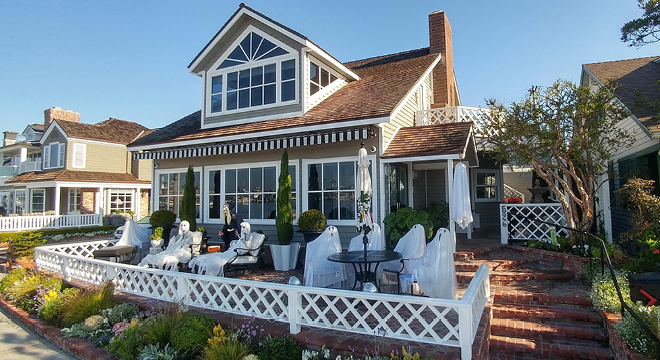Neighborhood Design with the Trick-or-Treater in Mind

October 31st is the one day of the year where good neighborhood design especially impacts the decisions of many young and old…. Where should we go trick-or-treating?
What makes a neighborhood a popular haunt to spend All Hallows’ Eve?
Design Tricks for Making a Neighborhood a Real Treat on Halloween:
- Homes: Higher-density detached homes provide the opportunity to ring many doorbells within a child-size walking distance. Homes in close proximity enable continuous visual stimuli, energizing trick-or-treaters and minimizing down-time between front doors. Homes with unique character and style, in addition to festive decorations, provide aesthetic interest for the haunted journey.

- Streets: Parents want streets that are safe for their children to walk along. Typically, these ideal streets are smaller-scale, pedestrian-oriented, and have interesting streetscapes. Tree-lined streets and curb-separated sidewalks are found in many of the popular Halloween neighborhoods. Trees add to the ambience since they are easy to decorate and often create spooky shadows, playing into the Halloween theme. Curb-separated sidewalks help promote safety by buffering children from moving traffic.


- Circulation: A circulation system that is simple to navigate plays a role in successful trick-or-treating neighborhoods. Not only for the local trick-or-treaters, but for those unfamiliar with the neighborhood, easy circulation makes the neighborhood safer to drive through. Minimal traffic is best to ensure pedestrian safety.
- Neighborhood Common Space/Planned Neighborhood Events: Events such as trick-or-treating pre-parties or neighborhood costume parades add to the revelry of the holiday. These events encourage residents to not only socialize, but enables a sense of community and safety when neighbors have familiarity and look out for one another.


- Eyes on the Street: In her book, The Death and Life of Great American Cities, Jane Jacobs discusses the importance of having “eyes on the street”. When homes are oriented toward the street, people are more inclined to notice when something is not right. Homes with front doors that are close to and visible from the street also help maximize safety for trick-or-treaters. Parents can keep their children in clear view as they approach and stand at the door, while children can feel a sense of adventure making that journey with their peers.

Although not a specific design feature, many successful neighborhoods foster a family-oriented population. Having children integrated throughout the neighborhood fundamentally gives the neighborhood a strong advantage for being a thriving trick-or-treating location. For most, it really comes down to having a festive and fun safe place, because not everyone likes spending Halloween in a ghost town.




Leave a Reply